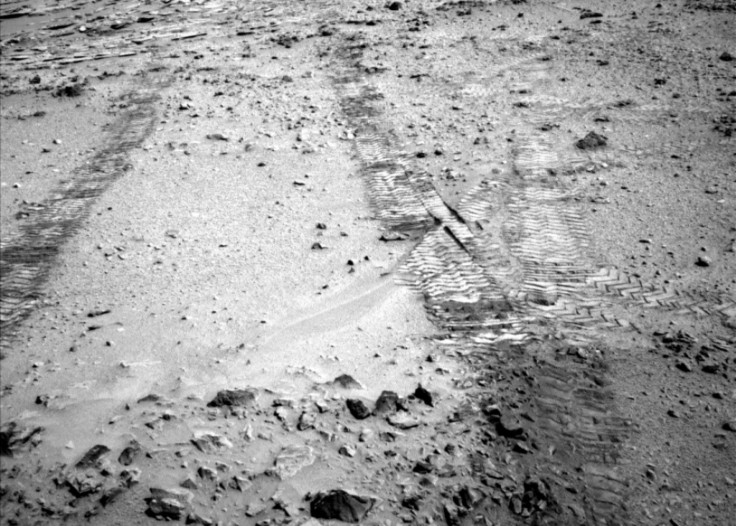Hiking On Mars: Curiosity Rover Heads Toward Mount Sharp, Months-Long Journey Ahead

NASA’s Curiosity rover has left the "Glenelg" area on Mars and is now heading toward Mount Sharp, the mission’s main destination, located about 5 miles (8 kilometers) away.
NASA said that after completing a close-up investigation of a sedimentary rock formation called "Shaler" on the Red Planet last week, Curiosity drove 59 feet (18 meters) away from it on July 4, the 324th Martian day, or sol, since the rover landed on the Martian surface. A sol equals one day and 40 minutes in Earth time.
The rover drove another 131 feet (40 meters) on July 7 toward the lower reaches of Mount Sharp, a destination which Curiosity will reach after driving southwest for another nine months to a year. The six-wheeled robot’s top speed across the hard and flat ground is about 0.09 mph (0.14 km/h).
“We are on a mission of exploration,” Jim Erickson, Curiosity project manager NASA's Jet Propulsion Laboratory in Pasadena, Calif. said. "If we come across scientifically interesting areas, we are going to stop and examine them before continuing the journey."
Scientists believe that exploring Mount Sharp, which is situated in the middle of Gale Crater, will help them find evidence about how the ancient Martian environment changed and evolved.
“In the Glenelg area, where Curiosity worked for the first half of 2013, the rover found evidence for an ancient wet environment that had conditions favorable for microbial life,” NASA said in a statement on Monday. “This means the mission already accomplished its main science objective.”
During its trip, the rover will pass through unfamiliar terrain. However, the path is not likely to have too many boulders, steep slopes or other potential obstacles.
According to Ashwin Vasavada, mission deputy scientist at NASA, Curiosity may have to encounter some challenge toward the end of its journey, when it will have to cross a bank of sand dunes to get to the base of the mountain, Associated Press reported.
© Copyright IBTimes 2025. All rights reserved.




















